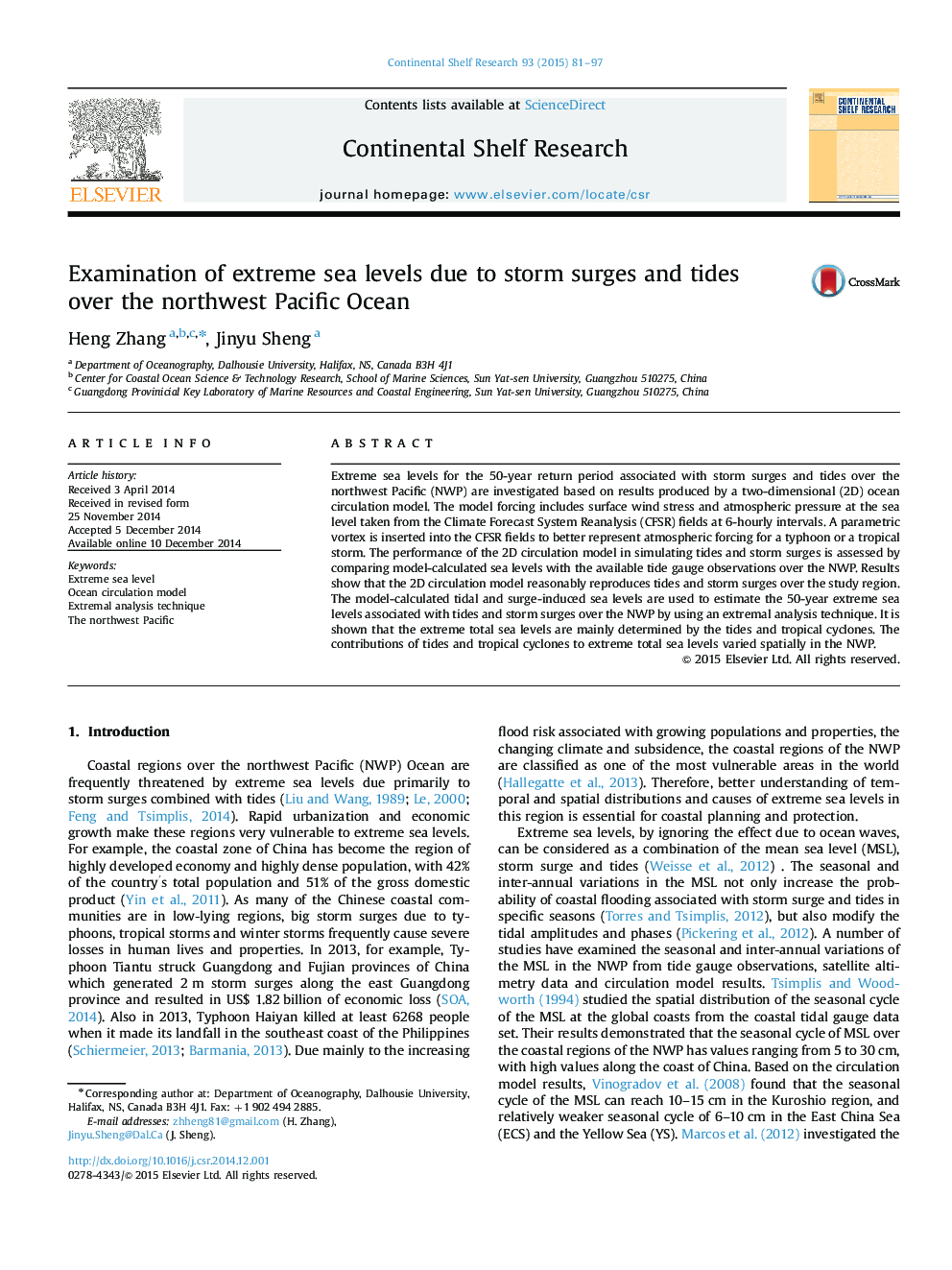| Article ID | Journal | Published Year | Pages | File Type |
|---|---|---|---|---|
| 4531773 | Continental Shelf Research | 2015 | 17 Pages |
•Tidal and surge-induced sea levels over the northwest Pacific Ocean were simulated using an ocean circulation model.•Typhoon wind was represented by a parametric vortex in the model.•Extreme sea levels with a 50-year return period were statistically estimated from 32-year sea level simulations.•Main physical processes affecting extreme sea levels were examined.
Extreme sea levels for the 50-year return period associated with storm surges and tides over the northwest Pacific (NWP) are investigated based on results produced by a two-dimensional (2D) ocean circulation model. The model forcing includes surface wind stress and atmospheric pressure at the sea level taken from the Climate Forecast System Reanalysis (CFSR) fields at 6-hourly intervals. A parametric vortex is inserted into the CFSR fields to better represent atmospheric forcing for a typhoon or a tropical storm. The performance of the 2D circulation model in simulating tides and storm surges is assessed by comparing model-calculated sea levels with the available tide gauge observations over the NWP. Results show that the 2D circulation model reasonably reproduces tides and storm surges over the study region. The model-calculated tidal and surge-induced sea levels are used to estimate the 50-year extreme sea levels associated with tides and storm surges over the NWP by using an extremal analysis technique. It is shown that the extreme total sea levels are mainly determined by the tides and tropical cyclones. The contributions of tides and tropical cyclones to extreme total sea levels varied spatially in the NWP.
